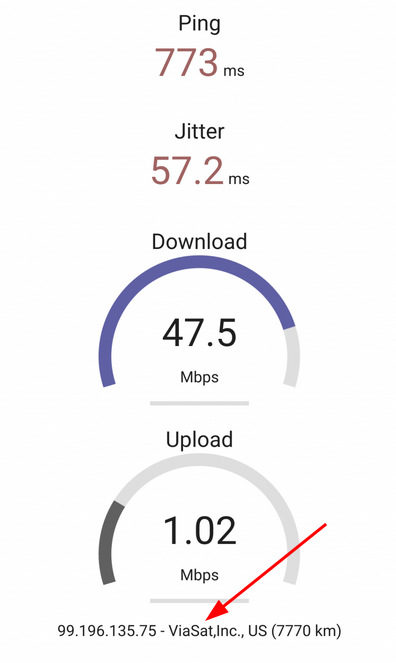
In the previous post I had a look at Delta Airlines’ on-board Internet connectivity over the Atlantic. On this flight, the company used Intelsat for connectivity and I assumed that the 30 day pass I bought would also give me connectivity during my continental flights with Delta. That was not the case however, and I soon found out the reason for this: Over the US, Delta uses a different system, provided by Viasat. So how did the Viasat system perform in the busy US airspace? The screenshot on the left gives a first indication.
While the on-board Wi-Fi in Europe with the airlines I’ve flown in the last couple of months only gave me trickle speeds at best, on-board Internet connectivity in the US on my Delta flights rocked. Downlink speeds of almost 50 Mbps when I used my own speed test server left me speechless. I ran several more speed tests during a 5 hour flight from the US east coast to the west coast and never had a result of less than 20 Mbps. Uplink speeds were always in the low single digit Mbps range, so less glory here.
Also an interesting finding: I assumed that over the US continent, in-flight Internet would used ground based stations. Whenever I ran a speed test, however, I got round trip delay times of 700 ms, a clear indication that a satellite connection is used. The more I am surprised that download speeds were so high. While performance to my own speed test server on tcp port 80 was good, iperf3 to and from another server on a non standard port was always very low, around 1.5 to 2 Mbps. Looks like some kind of throttling, the difference is just too significant. But it was a long day so I didn’t investigate any further and resorted to streaming Youtube videos and switch off the brain for some time 🙂